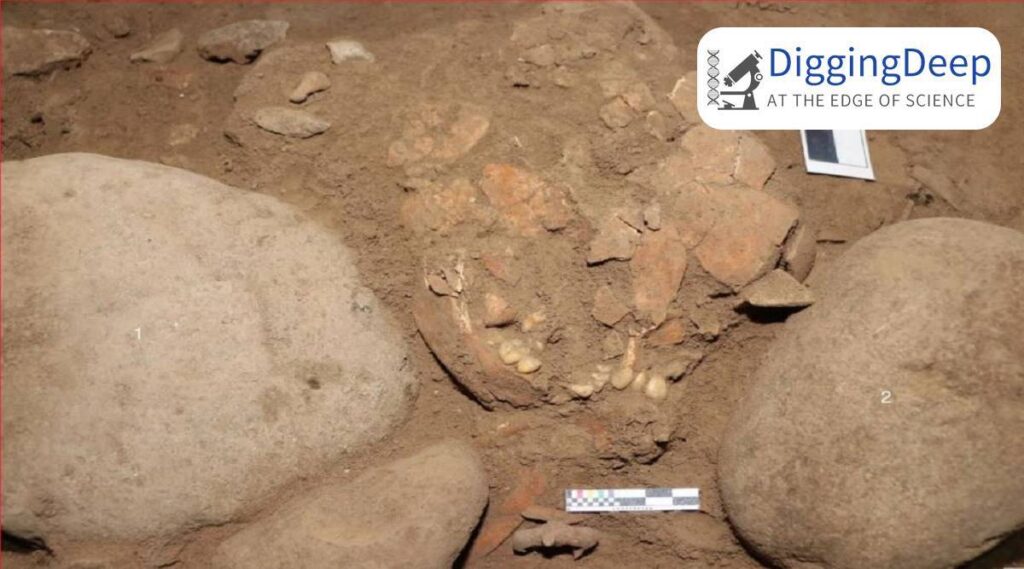DNA of a female hunter-gatherer, buried 7,000 years ago in Indonesia, reveals population history of SE Asia
A team of archaeological geneticists has reconstructed the genome of a female hunter-gatherer from the Indonesian archipelago, which sheds significant light on the population history of southeast Asia.
This study reports the first known human genome from Leang Panninge in Wallacea, an oceanic island in the middle of the continental shelves of Sahul and Sunda.
Although anatomically modern humans are posited to have crossed over to Australia from Asia as early as 65,000 years ago, the oldest dated Homo sapiens remains come from only 13,000 years ago.

One of the reasons is the tropical climate, which decomposes natural tissues quite quickly and is therefore not very conducive to the preservation of any remains. Previously, only two ancient human genomes, one from Laos and another from Malaysia, had been sequenced from southeast Asia.
Hunting gathering is a lifestyle that is associated with the Palaeolithic (3 million years ago to 10,000 years ago) in the archaeological record. This lifestyle was largely replaced by the adoption of agriculture and domestication of animals and plants, widely known as the Neolithic Revolution (10,000 to 8000 years ago). However, some hunter-gatherer groups have managed to survive to the present day and have been the subject of many anthropological inquiries.
Reconstruction of genetic history
The present study employed molecular markers with different modes of inheritance to examine the genetic history of the individual from Leang Panninge.
While nuclear DNA (nrDNA) is biparentally inherited i.e. approximately half coming from the mother and half from the father, mitochondrial DNA (mtDNA) shows uniparental inheritance i.e. it is inherited exclusively from the mother. Studies targeting more molecular markers than one enables a better reconstruction of the genetic history of a population.
The DNA was sequenced from the petrous bone, a small bone in the ear region of the skull. The petrous, in recent years, has been targeted extensively for ancient DNA for its remarkable preservation of genetic material.
Since there is a paucity of a wide number of ancient individuals, any ancient DNA study has to be compared with the known genetic history of present-day populations in the region, which, in this case, were southeast Asia, Papua New Guinea, Australia and other Oceanian islands.
Who was her ancestor?
Genetic analyses reveal that the individual shares significant genetic ancestry with the present-day populations of Oceania — Australia, Papua New Guinea and other island groups.

Selina Carlhoff, the lead author of the study, clarified in an email: “In direct comparisons, we show that these Near Oceanian groups are more closely related to each other than to Leang Panninge…which would place Leang Panninge outside of that clade.”
The populations of Oceania and Eurasia are supposed to have diverged 58,000 years ago, and the Papuan and Australian people around 37,000 years ago, which is also when the Leang Panninge individual had branched off.
While this was going on, populations from these areas had seen multiple introductions of genetic material from the Denisovans (Denisovans are an extinct species of early hominins that ranged across Asia during the Palaeolithic).
Researchers identified another genetic ancestral lineage in the ancient genome of the individual that seems more closely related to deep Asian lineages.
“Considering the Leang Panninge individual as an admixture between a Near Oceanian- and a deep East Asian-related lineage may also explain the reduced amount of Denisovan-related ancestry compared to present-day Papuan groups,” Carlhoff added.
Given the dearth of pre-Neolithic genomes from the region, it is difficult to underpin the exact source of admixtures. It could be that this individual carries some ancestry from the first Homo sapiens inhabitants of Sulawesi around 50,000 years ago, or that a Southeast Asian group related to the present-day Andamanese people had contributed some genetic material.





